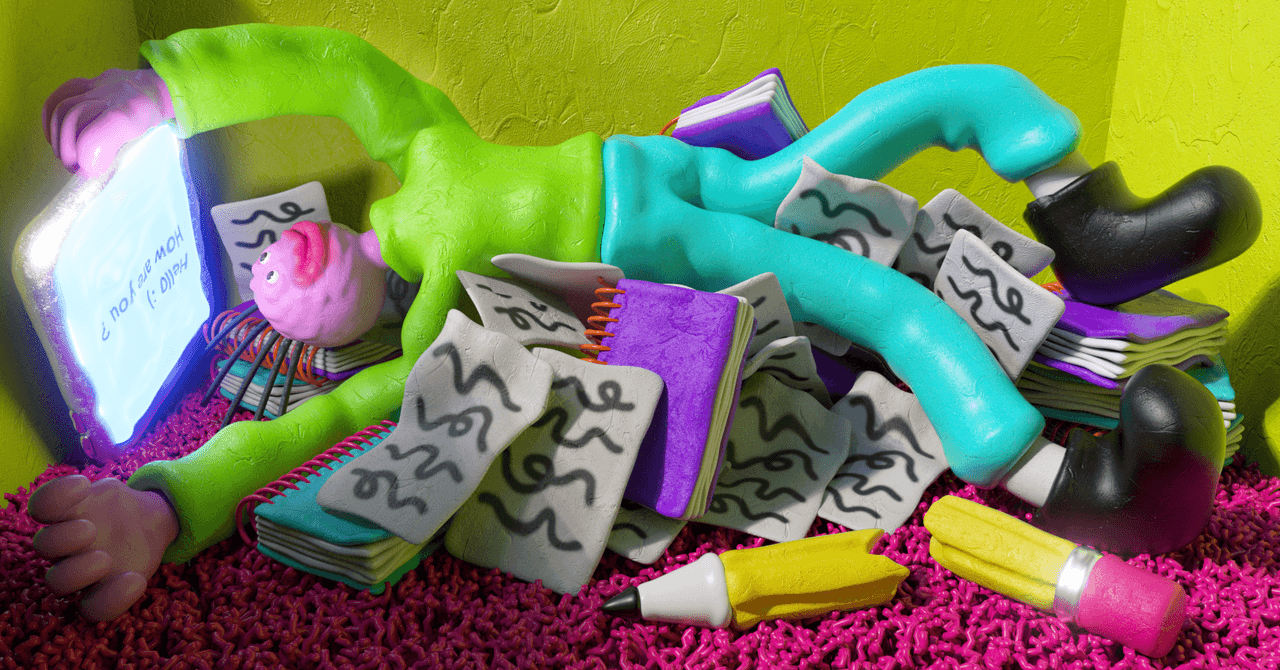
Wiley points out something else, too. Over the past two decades or so, as schools have evaluated how much to focus on handwriting, there has also been a push for more STEM education. In some cases, that means spending less time on penmanship to make room for those subjects. But, Wiley says, it’s a mistake to think that writing isn’t necessary. Mathematicians need to jot down problems; scientists need to take notes in the lab. These things can be done digitally, but they still require base-level communication skills. “Science, technology—we don’t proceed in those things without reading and writing,” he says.
Even if kids acquire adequate handwriting skills in elementary school, there is still the chance that they could lose them. During our conversation, I told Wiley about the fear I had of losing the handwriting style I’d worked to perfect years ago. That fear, it turns out, isn’t unfounded. Overreliance on keyboards can lead to what’s known as “character amnesia.” Put simply, if you spend more time typing letters, you’ll forget how to physically draw them. It’s particularly common for Chinese speakers who work with thousands of characters and often use keyboard alphabets to spell out the phonetics of a word and then select the character when their device figures out which one they’re trying to use (sort of like autocomplete). In 2021, researchers in China found that “character amnesia occurs for about 42 percent of characters and about 6 percent of the time for university students.” Perhaps the old adage is true: If you don’t use it, you lose it.
But there might be something that causes a handwriting renaissance long before then: AI. Students’ ability to outsource critical thinking to LLMs has left schools and universities scrambling to find ways to prevent plagiarism and cheating. Five semesters after ChatGPT changed education, Inside Higher Ed wrote in June, university professors are considering bringing back tests written longhand. Sales of “blue books”—those anxiety-inducing notebooks used for college exams—are ticking up, according to a report in The Wall Street Journal. Handwriting, in person, may soon become one of the few things a student can do to prove they’re not a bot.
Reverting to blue books, though, does come with its own set of problems, ones that had ostensibly been solved by letting students type. Anne Trubek, author of The History and Uncertain Future of Handwriting, gets asked about penmanship a lot. When I call to ask about the end of handwriting, she’s concerned about blue books most of all. Professors, she says, could ding kids with poor penmanship for their writing, no matter how sound their arguments.
“It becomes discriminatory or whatever term you want to use toward people with poor handwriting,” Trubek says. “It doesn’t have to do with your cognitive ability. It has nothing to do with your ability to think about the fall of Rome.”
Therein lies the problem. When so much of that thinking can be offloaded to AI, going analog begins to look like one of the only ways to test comprehension, fairness be damned. After all, previous kinds of technology—like graphing calculators—also forced teachers to make kids write things out longhand. Literally showing one’s work, in writing, became the way students evinced that they understood what the machines did. As AI creeps into schoolwork, handwriting won’t die so much as, once again, provide proof of life.



